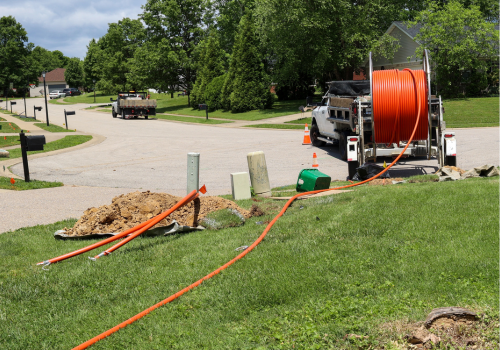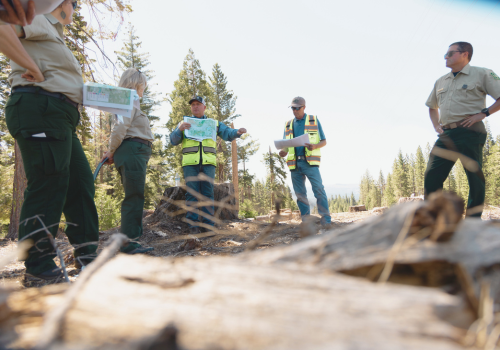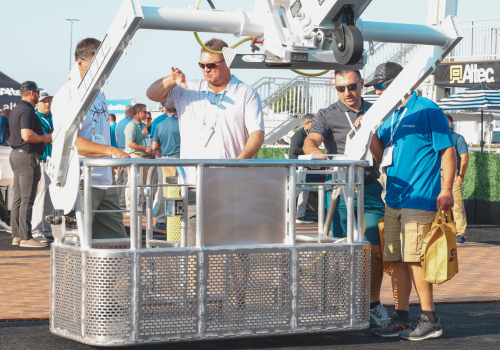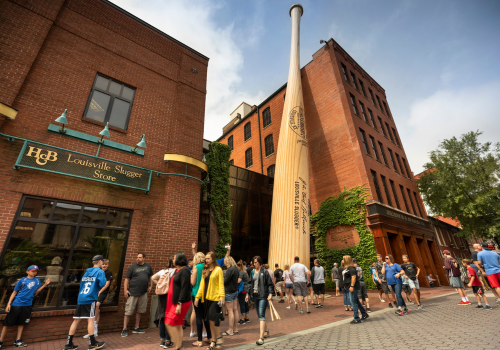The next generation of workers (Gen Z, born between 1997 and 2013) is poised to overtake Baby Boomers in the full-time workforce in early 2024, according to Glassdoor’s 2024 Workplace Trends report. With unprecedented spending taking place to support a clean energy transition, utilities need to sharpen their focus on attracting and retaining this next generation of workers.
Jake Purvis, Partner at Oliver Wyman, a management consulting firm, sees a growing chasm in the supply and demand for the workforce in this space. “In the Energy and Natural Resources industries, and all the sectors, demand is going up for workers and supply is going down,” he says. “We haven't seen a demand spike in the way that it's currently expected, since World War II.”
Purvis believes that in order to accomplish what amounts to more than $1 trillion in power generation and carbon capture investment, the workforce is going to have to grow from just over 900,000 on the front line to almost two and a half million. Contractors will play a vital role in completing the work, but they face the same challenges as utilities in attracting Gen Z talent.
ComEd, the electric utility provider for more than 4 million customers across northern Illinois, acknowledges the growing demand for clean energy workers. A recent study commissioned by ComEd found that the clean energy transition will create up to 150,000 jobs in Illinois by 2030. Laticia Holbert, Workforce Development Manager for ComEd, believes there is an opportunity to raise awareness among youth on the roles performed out of sight or only noticed when an emergency event or outage arises. “That’s why ComEd works closely with local partners to be in the communities we serve, facilitating career fairs, field trips, and other career exposure programs held throughout our region to give students access to our company leaders and a close-up look at roles within the company,” she says.
ComEd, an Exelon company, has been recognized by the Center for Energy Workforce Development (CEWD) as a leader in matching residents local to northern Illinois to the jobs being created by the clean energy transition through its successful workforce development programs. Last year, the CEWD honored Laticia Holbert with the Workforce Champion Award for her leadership in creating meaningful change that will influence, mobilize, and energize a diverse, skilled talent pipeline.
Jake Purvis and Laticia Holbert, along with Brian Turmail, Vice President of Public Affairs & Strategic Initiatives of the Associated General Contractors of America, offer some ideas on how utilities can appeal to Gen Z, the next generation of full-time workers.
They can be a part of the clean energy movement
Gen Z has interest in the clean energy transition. In a recent survey from Deloitte, 21% of Gen Z respondents cited climate change as a top concern, second only to cost of living (35%) and unemployment (22%).
According to Holbert, recent participants in ComEd programs geared toward high school students reinforce this draw. “Younger generations are interested in addressing climate change, so we’ve worked to expand opportunities for them to learn about the variety of careers in our industry, including jobs that will support the growth of EVs, solar, and other renewable technologies,” says Holbert. “Whether that be in a role that’s focused on engineering and STEM, on our front lines working in the field, or through any number of administrative type roles employed by ComEd and the industry, there are options for our youth to make an impact in the clean energy sector.”
With so much work to be accomplished, utilities offer tremendous opportunity. “There’s going to be opportunity for accelerated learning, accelerated advancement and leadership positions available,” says Purvis. “Being part of the energy transition is an incredible opportunity for our youngest workers to look back and say, ‘I really helped build the future of how we power the world.’”
While Purvis believes green energy and renewables should be a focus of a recruitment pitch, he remains skeptical that it will be enough to sell prospective candidates. A 2023 Oliver Wyman Gen Z Report indicates Gen Zers may not want to play the corporate game. Sixty percent of Gen Z respondents agreed with the statement, “a job does not need to be fulfilling — it should enable me to find balance and fulfilment in other aspects of my life. “Employment is not where Gen Zers are seeking their purpose in the same way that prior generations did,” said Purvis. Instead, many are interested in flexibility, autonomy, and work-life balance.
There will be opportunities to leverage their entrepreneurial spirit
Many Gen Zers view themselves as entrepreneurs. The Oliver Wyman Gen Z report revealed that 35% of white-collar and 60% of blue-collar Gen Zers have side hustles, compared with 19% and 28% of older generations. The report suggests organizations can capitalize on this by incorporating structured, incentivized projects or programs into their value proposition. “When there is growth, you can get much more thoughtful and more creative about what different roles are, and you can create nontraditional roles that will appeal to that group,” says Purvis.
They can use their technology skills and be part of a team
As vice president of Public Affairs & Strategic Initiatives for Associated General Contractors of America, Brian Turmail has his fingers on the pulse of workforce initiatives for the construction trades. “Messages around the teamwork aspect of construction and highlighting technology in construction perform well,” he says. As the first generation of digital natives, Gen Zers are very interested in applying technology to their work.
Career paths offer a good quality of life without a college degree
The Oliver Wyman Report found that 52% of Gen Zers worry about their financial security and stability, more than double older generations. With many utilities run by government agencies and large corporations, the sector offers great stability. However, this may not be well known among Gen Z. “Many young people have been surprised to learn that ComEd, with over 6,300 employees, is one of the largest employers in the region, and offers a wide range of employment and job types,” says Holbert.
With many career paths that offer a good quality of life without a degree, utilities and utility construction are attractive options for Gen Z. According to Bureau of Labor Statistics average hourly earnings in construction reached $37.55 in January, while the average hourly earnings for utilities topped $50.55, more than any other sector. Construction wages were nearly 9% higher than the private-sector average of $34.55.
“I think the pendulum is swinging back and putting value on crafts like construction,” says Turmail. Students today are more reluctant to take on heavy college debt without a payback.
ComEd works to educate local youth on the growing number of family-sustaining roles that will be needed to support the clean energy industry. Several ComEd programs raise awareness on STEM career pathways as well as trades career pathways, an alternative to a 4-year degree program.
Women and minorities are welcome
Historically, women and minorities have been underrepresented in utilities and construction fields. However, Purvis believes the employment gap in the utility industry won’t be filled without them. Utilities need to be serious about welcoming them. “ComEd has launched a number of programs and partnerships to reduce barriers in recent years,” says Holbert, “including hosting the first-of-its-kind all-female climb clinics to better accommodate women pursuing careers as line workers.”
Last year, ComEd launched the CONSTRUCT Youth Academy in partnership with the YMCA—a summer program that introduces high school juniors and seniors to the various career paths in the construction and energy fields. The program was such a great success in its first year, that it’s being expanded to 4 sites in 2024. With high application rates and our growing program offerings, “We’re learning that there’s actually a lot of interest in joining the utilities, and that the trades are increasingly appealing career paths to follow,” says Holbert. “With our training programs, ComEd is uniquely positioned to set youth on course to good-paying jobs in our field.”
ComEd’s workforce training program for adults, the CONSTRUCT Infrastructure Academy, is now in its 11th year. It has provided more than 800 members of diverse communities the training required to land entry-level trades roles – with a more than 70 percent job placement rate. Similarly, a new program called the Power Up Academy, was created to level the playing field for women and people of color interested in technical careers.
Holbert and Turmail both support cross-sector collaboration to advance recruitment. “Through partnerships, we’ve been able to broaden our menu of programs for youth, including Chicago BUILDS, Youth Ambassadors, Tools of the Trade, and the CONSTRUCT Youth Academy,” says Holbert.
“Our work to build the pipeline of talent needed for the future would not be possible without the coordination and collaboration with many here in our region,” adds Holbert. “This includes workforce agencies, community-based organizations, employer sponsors, as well as government and educational partners.”
“The more people working together, the better,” said Turmail. “Especially if the actions are coordinated.”
Best ways to reach Gen Z
Our experts agree that social media is one of the best ways to reach Gen Z. “Smart companies are already leveraging social media to market themselves to potential workers,” says Purvis.
Digital advertising allows more targeting than traditional media and enables recruiters to use different appeals for different targets. “We buy a demographic,” says Turmail. “We are serving people wherever they go online.”
However, traditional school and campus visits and partnerships with community organizations continue to be effective ways to reach the next generation of workers. “ComEd collaborates with partners in a variety of career events where we bring our subject matter experts and technology out on-site to showcase job roles, interact directly with interested youth, provide the chance for real-time engagement with company leaders, and learn about current opportunities and the skills needed to explore future career paths,” says Holbert.
With labor demand exceeding supply, Gen Z is quickly forcing employers to adapt to compete for their talents. If the industry is going to meet its future labor needs, it needs to bring awareness to all that it offers.
Subscribe to The Utility Expo monthly newsletter to receive more industry insights like this.












